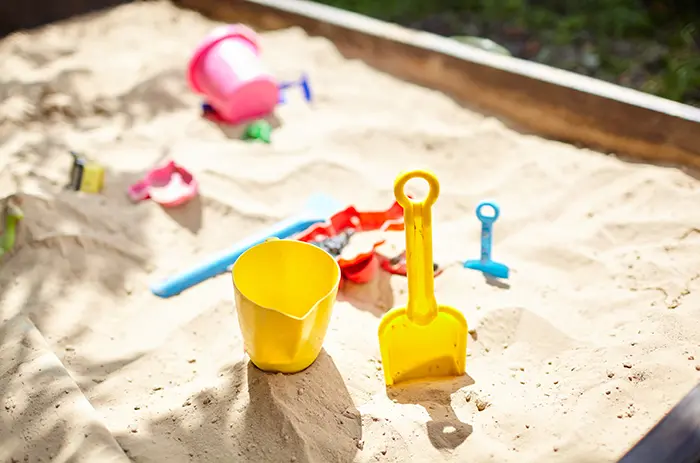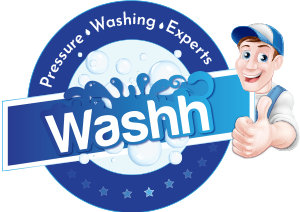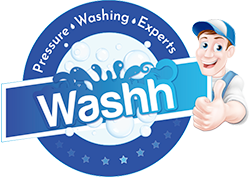Kids need a safe place to play, and that starts with keeping the playground clean. For HOAs, tasks beyond sweeping up leaves or picking up trash also include deep cleaning the play equipment itself. That’s where pressure washing playground equipment comes in.
Why Pressure Washing Playground Equipment Works
Playgrounds are exposed to the elements every day. Over time, rain, dirt, and even bird droppings can build up on them. Additionally, the oils from your skin, along with spilled drinks and forgotten food, can contribute to the accumulation of grime on your play equipment.
Due to the accumulation of dirt on the playground, it needs to be cleaned regularly. Pressure washing playground equipment is one of the fastest and most effective ways to remove all that grime.
While playground maintenance does improve and maintain pleasing aesthetics, it plays a bigger role. A clean playground reduces the likelihood of slip hazards occurring. Regular cleaning also helps minimize the accumulation of harmful bacteria on the surface. Lastly, it also helps maintain the condition of your play equipment, prolonging its life.
Choosing the Right Equipment and Pressure Settings
Pressure washing playground surfaces shouldn’t be done carelessly. You will need more than just getting your pressure washer and turning it on.
Some play equipment uses delicate materials. If you use settings that are too powerful, you can damage them; if you use too little pressure, you won’t be able to get anything clean at all.
For most HOA playgrounds, a residential-grade pressure washer with a pressure rating of 2,000–3,000 PSI is suitable. Commercial washers are more powerful, but may not be necessary unless you’re dealing with large, heavily used parks.
You also need to find the right nozzle tip. For best results, choose a 25 to 40-degree nozzle for broad, gentle coverage that won’t damage the equipment.
Here’s a quick guide to safe pressure levels by material:
- Plastic playsets: 1,000–1,500 PSI
- Wooden playgrounds: 1,200–1,800 PSI (avoid stripping sealant)
- Metal surfaces: 1,500–2,000 PSI (watch for rust spots)
Before you start cleaning your playground, test the pressure on a small, hidden area first. This helps ensure the settings won’t cause any problems.
Doing the Prep Work

Before cleaning, you’ll need to get the work area ready. By doing this, you’re ensuring your safety while using the pressure washer.
Here’s what you need to do:
- Start by removing any loose toys and debris from the area. This helps keep your workspace safe. Any loose items can fly about when struck with high-pressure water. It also helps clean surfaces more evenly.
- Inspect the equipment for damage. Look for cracks, splinters, or rust spots that may worsen during the cleaning process. Ensure that you repair them before using the pressure washer on these surfaces.
- Protect the nearby landscaping. For this, you may use a tarp or plastic sheeting. Cover any plants or landscaping elements that a pressure washer can damage.
- Planning to use a cleaning solution? Apply it before using your pressure washer and let it sit for about 5 to 10 minutes. Opt for cleaners that are both non-toxic and biodegradable. This ensures they’re safe for the environment and for the children using the play equipment.
Step-by-Step: How to Pressure Wash Playground Equipment
There’s a proper way of pressure washing. To get the best results, you need the right technique. This makes things efficient while ensuring you’re not making things worse.
Here are some steps you can follow:
- Wear Protective Gear: Like most other equipment, a pressure washer can be unsafe. Therefore, make sure to wear gloves, goggles, and waterproof boots to protect yourself from the spray and debris.
- Start from the Top: Clean from the highest point of the play equipment first. When you do this and work your way down, you are also rinsing the dirt as you go.
- Maintain the Right Distance: Ensure that the nozzle stays around 12-18 inches away from the surface. Doing this lets you have enough water pressure to clean efficiently without damaging the surface.
- Use Smooth, Even Strokes: Don’t rush the process. Move your spray in steady, overlapping passes. Don’t just wave the wand around. This ensures an even clean finish and avoids wear marks.
- Rinse Thoroughly: After cleaning the area, reapply clean water to rinse away any remaining soap or debris. This final rinse leaves the playground ready for safe use.
Tips for Different Play Equipment Materials
There are many different types of materials used in the manufacture of playground equipment. Each material has distinct properties, which means cleaning them will require different approaches.
Here are some tips you can keep in mind:
- Plastic Playsets: Plastic is durable. However, it can be sensitive to high pressure. For this type of equipment, you should use mild pressure. If it’s painted or has decals, avoid spraying on those spots for too long, as it may cause them to peel off.
- Wooden Structures: While sturdy, cleaning wood with a pressure washer requires special care. Using too much pressure can lift wood grain, creating rough surfaces. For this, use 1,200–1,500 PSI, and keep the nozzle moving at all times. After cleaning, consider resealing or staining the wood to protect it from moisture.
- Metal Surfaces: Metal can easily withstand a little more pressure, but it’s prone to rust spots. Pressure washing can loosen flakes of rust, so treat those areas gently. After cleaning, apply a rust-inhibiting primer and use touch-up paint as needed.
How Often Should You Pressure Wash?
There are several factors to consider when determining how often to deep clean a playground. The schedule for pressure washing playgrounds varies from area to area. The right frequency depends on how frequently it’s used and the local climate.
Here are some general guidelines many communities follow:
- High-traffic playgrounds: These play areas should be cleaned monthly as dirt, grime, and bacteria tend to collect more quickly.
- Moderate-use areas: If there’s not a lot of traffic for your playground, cleaning every 2-3 months is usually enough.
- Seasonal cleaning: This should be done at the start and end of the outdoor play season
If your community is located in an area with a humid climate, expect mold and mildew to appear quickly. So, don’t be too surprised if you need to wash your play equipment more frequently.
Common Issues When Pressure Washing Play Equipment

You may have done enough preparation to clean your playground, but avoid being complacent. Minor issues can surface when you start pressure washing playground equipment. While you may not be able to easily foresee some of those issues, knowing how to handle them can save time and prevent damage.
- Paint Chipping or Fading: If you notice some of the paint chipping off or losing its color, the pressure you’re using might be too high. Adjust the pressure of your washer for a sensitive surface. You may also use a wider spray angle to minimize damage.
- Raised Wood Grain: After cleaning wooden surfaces, try to feel their texture. If it feels rough, it’s possible that you accidentally lifted the grain. To correct this, lightly sand the rough spots and seal the wood.
- Rust Spots on Metal: Pressure washing can expose rust. When you find such spots, scrub them with a wire brush and apply rust-prevention paint afterward.
- Soapy Residue: If you notice leftover foam after cleaning, it indicates that a more thorough rinse is needed. Go over the area again with clean water.
Safe and Clean
Pressure washing playground areas is a crucial part of maintaining a clean, safe, and welcoming community within an HOA. However, do remember that you need the proper preparation, equipment, and technique for the best outcome. Help protect your kids while maintaining good visual aesthetics by clearing your playground equipment properly..
Seeking professional assistance with play equipment? Washh offers expert pressure washing services to residential and commercial properties. Call us today at 704-321-8000 or contact us online to receive a free estimate.
Related Articles:


